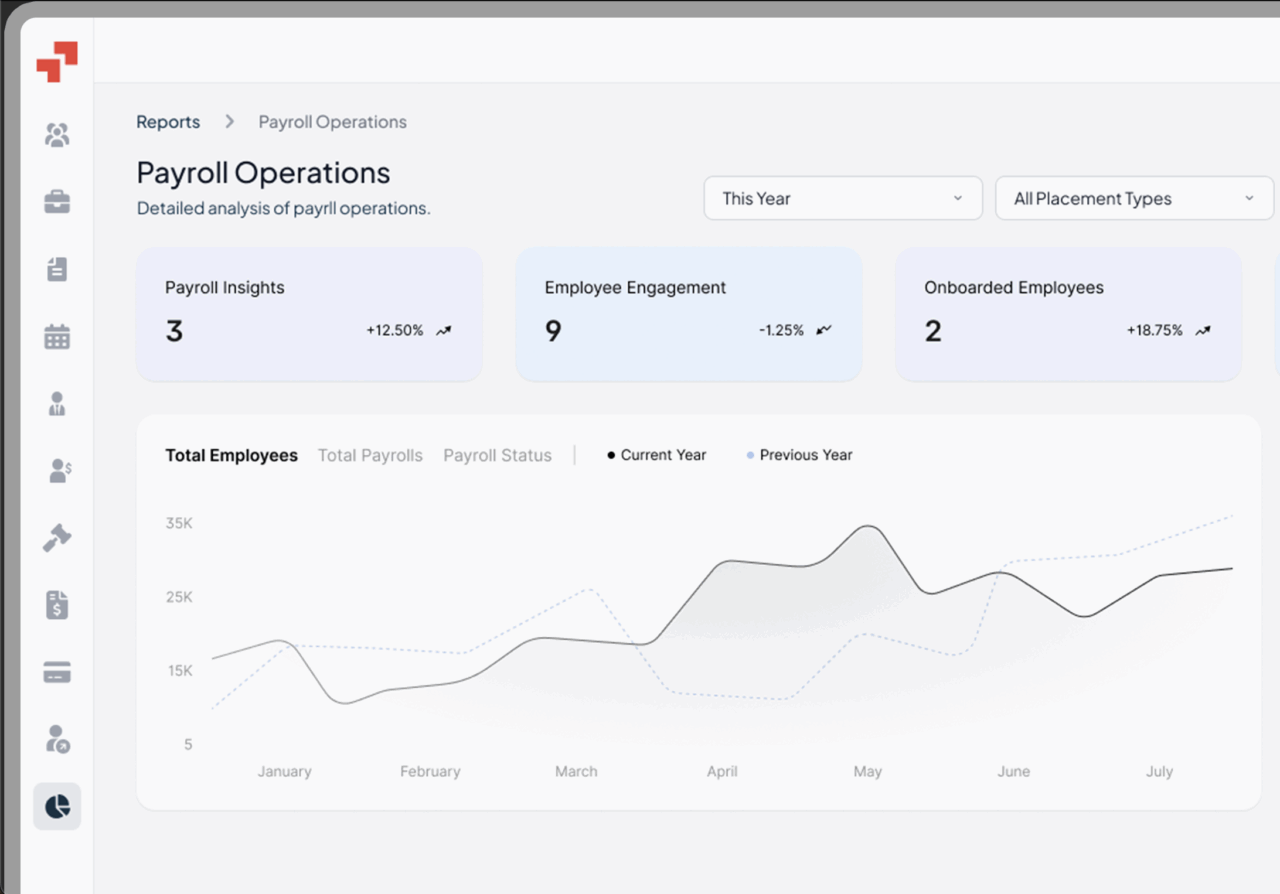HR compliance ensures companies follow employment laws, workplace regulations, and ethical labor standards while managing employees, with legal compliance as a core component. In today’s global workforce, compliance goes beyond payroll and contracts — it includes statutory compliance requirements such as safety rules, wages, benefits, documentation, worker classification, and anti-discrimination laws. As remote and international hiring increases, employers must navigate complex legal requirements across countries and jurisdictions. A proactive HR compliance strategy reduces legal risk, builds trust, and keeps workplaces fair, safe, and legally protected.
HR compliance ensures a business follows employment laws, internal HR policies, and ethical labor standards. It covers areas like payroll accuracy, employee classification, workplace safety, benefits administration, anti-harassment rules, and keeping documented HR policies.
Organisations must regularly review compliance requirements to stay aligned with laws and standards.
Strong HR compliance protects employees’ rights and reduces legal risks for employers. It includes consistent processes, manager training, and staying updated on regulatory changes. For global teams, HR compliance also involves meeting country-specific labor laws, employment contract rules, data privacy requirements, and statutory benefits.
What Does HR Compliance Do?
HR compliance ensures:
-
Fair hiring and equal employment opportunity
-
Accurate payroll and wage-hour compliance
-
Correct employee vs contractor classification
-
Workplace safety and anti-harassment enforcement
-
Compliance training and policy communication
-
Promoting employee compliance with workplace standards and policies
-
Documentation and audit preparation
-
Ethical employee termination and disciplinary actions
HR compliance teams protect organizations from compliance risks, employment disputes, penalties, and regulatory scrutiny. Their compliance efforts are critical to maintaining organizational integrity by tracking legal requirements, monitoring HR compliance metrics, and developing strategies to prevent violations. They ensure employees receive fair treatment, proper wages, and a safe workplace free of discrimination.
What Does HR Compliance Include?
HR compliance includes multiple pillars:
| Area |
Examples |
| Employment laws |
FLSA, EEOC, FMLA, OSHA, ADA, local labor codes |
| Payroll & wages |
Overtime, minimum wage, time tracking |
| Hiring & onboarding |
Eligibility verification, contracts, fair and compliant hiring process |
| Employee handbook |
Code of conduct, leave policy, grievance process |
| Benefits & compensation |
Statutory benefits, health plans |
| Safety & labor rules |
OSHA standards, workplace safety training |
| Anti-discrimination |
Equal opportunity laws, DEI policies, age discrimination laws |
| Data privacy & security |
GDPR, employee record security, employee data protection |
| Termination compliance |
Notice periods, severance rules |
Global employers must also align with immigration rules, international tax requirements, and mandatory regional benefits.
What are the 4 C’s of Compliance?
| 4C Principle |
Meaning |
| Commitment |
Leadership prioritizes compliance and communicates expectations |
| Communication |
Policies are documented, accessible, and reinforced |
| Consistency |
Standards applied equally across all employees |
| Culture |
Ethical behavior and compliance awareness become workplace norms |
Best Practices for HR Compliance
Start with HR compliance best practices as the foundation for your actions:
-
Maintain a legally updated employee handbook
-
Conduct regular compliance training
-
Monitor employment laws and regulatory changes
-
Use structured hiring and onboarding processes
-
Document employee files and HR records accurately
-
Conduct annual HR compliance audits
-
Use an HR compliance checklist to ensure all requirements are met and regularly updated
-
Standardize payroll and timekeeping systems
-
Track benefits eligibility and compliance
-
Establish anti-harassment and safety protocols
-
Train managers to recognize and address compliance issues, handle complaints, and understand relevant laws
-
Implement compliance tools and HR systems
-
Partner with EOR services for global hiring
Compliance must be proactive, documented, and continuously improved to ensure HR compliance and maintain HR compliance over time.
Why is HR Compliance Important?
HR compliance is important because it:
-
Prevents legal penalties, lawsuits, and fines
-
Ensures fair employment practices
-
Protects employee rights and safety
-
Maintains ethical workplace standards
-
Avoids payroll violations and tax penalties
-
Builds trust with employees, regulators, and partners
-
Supports global business expansion safely
-
Adheres to labor and employment laws and compliance obligations
Non-compliance can lead to severe consequences, including wage claims, discrimination lawsuits, payroll audits, regulatory investigations, and damaged employer reputation. Staying compliant with employment law is essential to avoid these risks and ensure ongoing legal protection for your organization.
HR Compliance Roles and Responsibilities
Key responsibilities include:
-
Drafting and enforcing HR policies
-
Conducting compliance training and onboarding
-
Monitoring labor law updates
-
Maintaining employee records and documentation
-
Managing classification and payroll accuracy
-
Handling workplace investigations
-
Ensuring benefits compliance
-
Coordinating with legal and finance teams
-
Conducting internal HR audits
-
Ensuring union law compliance and protecting employee rights under the National Labor Relations Act
HR leaders and compliance professionals play a crucial role in guiding and supporting compliance initiatives, helping organizations stay updated on evolving HR laws and regulations.
Some companies appoint dedicated HR Compliance Officers or leverage global partners for international regulatory management.
What is the Difference Between HR and HR Compliance
| HR Function |
HR Compliance Function |
| Talent acquisition, engagement, culture |
Legal governance, risk mitigation, documentation |
| Workforce planning & development |
Ensuring policies match legal requirements |
| Payroll execution |
Payroll compliance & audit readiness |
| Performance management |
Fair disciplinary actions & termination compliance |
In simple terms
HR = people strategy
HR compliance = legal protection & risk control
Employee Handbook and Company Policies
A current employee handbook is essential for HR compliance, serving as the main guide for company policies, procedures, and employee expectations. It should outline key rules tied to employment and labor laws, workplace safety, and employee classification.
Employers must review and update the handbook regularly to reflect changes in federal, state, and local laws. This proactive approach helps prevent compliance issues, ensures fairness, and supports a consistent and legally aligned workplace.
Compliance Risks and Mitigation
Compliance risks occur when a company doesn’t follow laws, regulations, or internal policies, which can result in fines, lawsuits, and reputational damage. Employers should conduct regular compliance audits to spot and fix gaps early.
Key strategies include ongoing compliance training, updating policies as laws change, and ensuring payroll and HR processes meet legal standards. Staying current with federal, state, and local regulations helps organizations reduce risk and maintain a compliant workplace.
How Can HR Ensure Compliance With Employment Laws?
HR can ensure compliance by:
-
Staying updated with labor regulations
-
Using standardized contracts and offer letters
-
Verifying employee eligibility and right-to-work
-
Maintaining payroll accuracy and time tracking
-
Monitoring overtime and minimum wage laws
-
Documenting disciplinary actions and performance reviews
-
Providing anti-harassment and safety training
-
Conducting regular policy reviews
-
Consulting legal and compliance experts
-
Identifying key compliance areas and consulting with a specific regulatory body as needed
-
Seeking guidance from an employment attorney for complex legal questions
-
Using third-party compliance and EOR services for global hiring
Automation, legal support, and compliance tracking systems are essential.
HR Compliance: Laws and Regulations Employers Should Know
Key U.S. laws employers must know:
-
Fair Labor Standards Act (FLSA) – wage, overtime standards
-
Equal Employment Opportunity Commission (EEOC) – anti-discrimination
-
Family and Medical Leave Act (FMLA) – leave regulations
-
Occupational Safety and Health Act (OSHA) – workplace safety
-
IRS Worker Classification Rules – employee vs contractor
-
Americans with Disabilities Act (ADA) – disability rights
-
Federal Trade Commission (FTC) – data privacy and consumer protection regulations
Authoritative References:
Global employers must also manage GDPR, immigration laws, mandatory benefits, and country-specific payroll and tax rules. Government agencies in each jurisdiction enforce these compliance standards, making adherence essential to avoid legal risks.
How to Conduct an HR Compliance Audit
Steps to run a compliance audit:
-
Review employee files and onboarding documents
-
Verify work authorization and contracts
-
Audit payroll records for wage-hour compliance
-
Confirm proper classification of workers
-
Review benefits enrollment and statutory obligations
-
Evaluate workplace harassment and safety policies
-
Examine termination processes and notice rules
-
Document findings and corrective actions
Run audits annually or during expansion.
A company hires employees in multiple states but fails to track state-specific overtime and paid leave laws. Managing compliance becomes even more complex with remote workers, as they may be subject to different local regulations depending on their location. One employee files a wage claim. The audit shows pay violations. The company updates policies, implements compliance software, and trains managers to prevent repeat issues.
When hiring internationally, they use an Employer of Record (EOR) to manage contracts, payroll, and statutory contributions legally in each country. Accurately defining job duties is essential to ensure proper employee classification and compliance with wage and hour laws.
Case Study: Global Compliance Scenario
A U.S. SaaS company expands into India and Germany. Requirements include:
-
German statutory health insurance
-
Indian Provident Fund contributions
-
Local employment contracts
-
Right-to-work checks
-
Paid leave requirements
-
Termination notice compliance
Instead of building foreign entities, the company partners with an EOR to manage local payroll, statutory benefits, tax compliance, and employee documentation. This prevents penalties, ensures fair compensation, and accelerates hiring.
PamGro - Global HR Compliance Made Simple
Managing HR compliance across countries is complex — from local wage rules to mandatory benefits and tax filings. PamGro’s Employer of Record (EOR) platform ensures:
-
Local labor law compliance
-
Payroll accuracy & statutory contributions
-
Work authorization and contracts
-
Country-specific benefits administration
-
Worker classification compliance
-
Termination procedures aligned with local laws
Hire globally with confidence – PamGro protects your workforce and your business.






